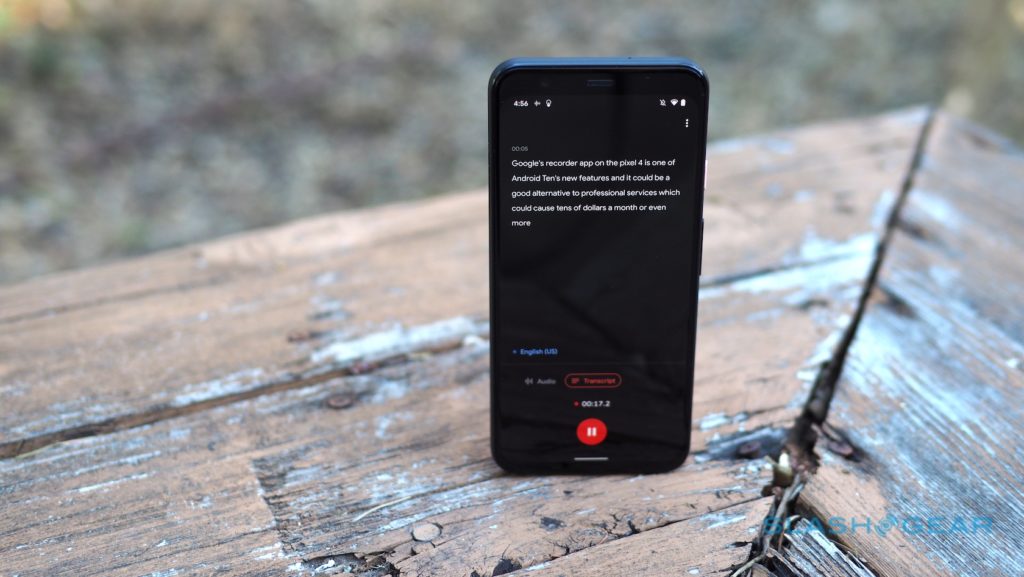Netgear ProGaming XR700 Router REVIEW
Summary
Netgear NightHawk Pro Gaming XR700 Router REVIEW
Tired of mere hundreds of megabits per second, PAT PILCHER plugs in the XR700 Pro for his Netgear NightHawk review and spontaneously combusts with tech-boy joy.
$949
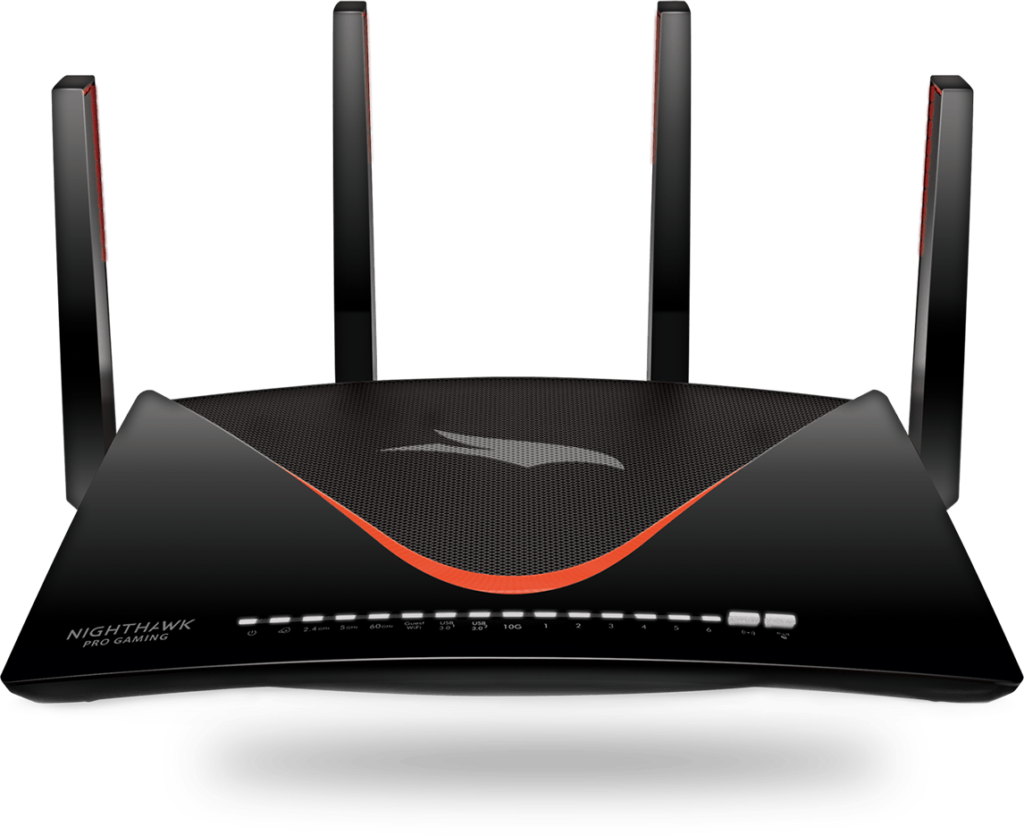
 Having made the leap to gigabit fibre, I’ve been underwhelmed by my broadband performance. While Wi-Fi will only deliver a few hundred megabits per second, I was getting nowhere near the gigabit throughput I’d envisaged when I signed up. With Wi-Fi and an ageing router the likely bottleneck, I decided I needed to upgrade my router, and that’s where this Netgear NightHawk review comes in.
Having made the leap to gigabit fibre, I’ve been underwhelmed by my broadband performance. While Wi-Fi will only deliver a few hundred megabits per second, I was getting nowhere near the gigabit throughput I’d envisaged when I signed up. With Wi-Fi and an ageing router the likely bottleneck, I decided I needed to upgrade my router, and that’s where this Netgear NightHawk review comes in.
Upgrading is not a decision to be made lightly. Key parts of my smart home rely on my router and with 79 separate smart gadgets, all demanding their data gets the attention they think it so rightly deserves, the basic bog standard router my ISP bundled simply wasn’t going to be up to the job, and the ageing router I’d replaced it with simply wasn’t keeping up either.
Having splashed out on gigabit fibre I was keen to wring as much performance out of my 900/400mbps connection as possible. Another key consideration was responsiveness. For gaming, bandwidth might not be so much of an issue, but latency definitely is.
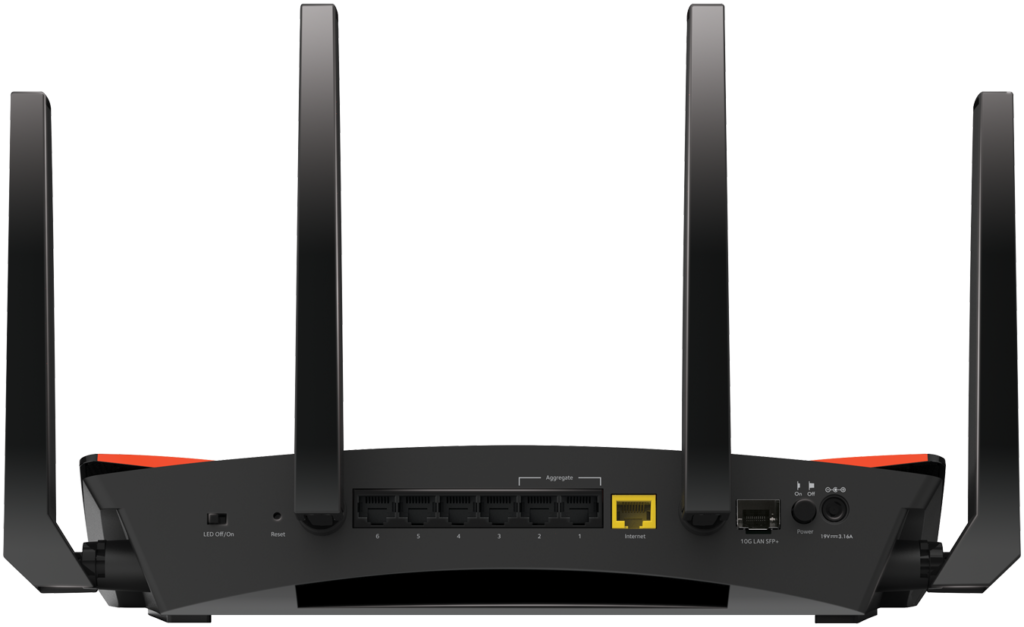
Taking these factors into consideration, I decided to give Netgear’s NightHawk Pro Gaming XR700 router a whirl. It’s a substantial piece of gear with lots happening under the hood. One big tick I discovered during this Netgear NightHawk review was its support of 802.11ad 60GHz Wi-Fi technology. And that it has a 10Gb Ethernet WAN port-plus link aggregation. The fact that it also comes equipped with 6 LAN ports really sealed the deal.
Sleek and Jet Black
The XR700 is a sleek piece of kit. Done out in a wedge shaped jet-black enclosure, it sports enough red trim to give it a definite Batmobile look. Because of its powerful CPU, it generates a fair amount of heat, so it has a mesh top for improved airflow. In short, the XR700 definitely isn’t your mum’s router, and is squarely aimed at gamers and power users.
With oodles of Ethernet, I was pleased to see during this Netgear NightHawk review that it included a 10Gb SPF+ WAN port (for use with a 10Gb switch or 10Gb network), and (count ém!) six-gigabit LAN ports (two of which can be aggregated). Rounding things out on the port front are two USB 3.0 ports for hooking up printers and storage so that anyone on your network can use them.
As is the case with most routers these days, the XR700 comes with four non-removable active antennas. It also has 15 LED indicators for power, internet the three radio bands it supports (2.4GHz, 5GHz, 60GHz), the USB ports, the 10Gb port, its LAN ports, and guest Wi-Fi. Oh, and a WPS button and Wi-Fi On/Off button. The only thing missing was a kitchen sink (I’m sure if I had a proper look in the XR700’s box there’d probably be one).
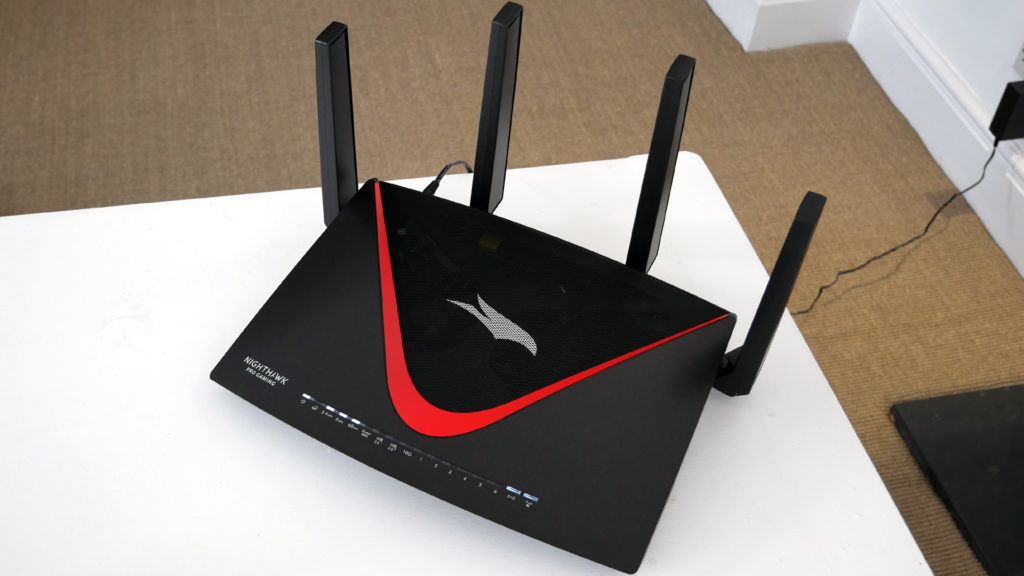
But What About the CPUI?
All of these features and specs sound great but are about as useful as a fart in a hurricane if the CPU powering the router is not up to snuff. The good news is that the XR700 has a quad-core 1.7GHz CPU, a generous 512MB of flash memory, and a large (for a router) 1GB of RAM.
According to the Netgear bumpf, it’ll deliver data transmission rates of 800Mbps on 2.4GHz, 1,733Mbps on 5GHz band, and 4,600Mbps on 60GHz band. The stonking 4gbps speed comes courtesy of 802.11ad support (which is more commonly known as WiGig).
Because it operates on the 60GHz band, this sort of performance is pretty much limited to the same room the router is in. You’ll also need gear that has 802.11ad networking support, but 4gbps is definitely nothing to sneeze at.
MU-MIMO
Like most recent routers the XR700 supports Multi-User Multiple Input Multiple Output (otherwise known as MU-MIMO, which reminds me of a fancy-sounding cocktail: “A Mu-Mimosa anyone?”). This transmits data to gadgets simultaneously rather than sequentially which in theory should result in significant performance improvements over non-MU-MIMO. The gotcha though is that even though a good many routers support MU-MIMO, not many devices can yet take advantage of it.

Beamforming aims wireless signals at devices, and what Netgear calls Smart Connect (which lets the router automatically choose the best wireless band based on factors such as the amount of traffic and signal strength) is also supported. Rounding things out, the XR700 also has support for 160MHz Wi-Fi. This doubles the 80MHz channel width with 5GHz to achieve much faster throughput.
One of the pain points with so many home routers is their user interface. Performing simple administrative chores such as changing your network name or finding a free Wi-Fi channel can be a painfully confusing undertaking. Thankfully, this isn’t the case with the XR700. It makes use of the same web interface as other NightHawk routers. It also packs a surprisingly sophisticated feature set that makes getting set up a joy.
Configuring Network Settings
Monitoring network activity is not only doable but also intuitive. Configuring network settings and tweaking network settings for gaming isn’t difficult either. Things are helped along thanks to the XR700’s Dashboard, which displays real-time graphs of CPU performance as well as bandwidth consumption, Wi-Fi and internet status. Then there are also other settings such as the Geo-Filter (more on this later), QoS, Device Manager, Network Monitor, Hybrid VPN, System Information, and Settings.
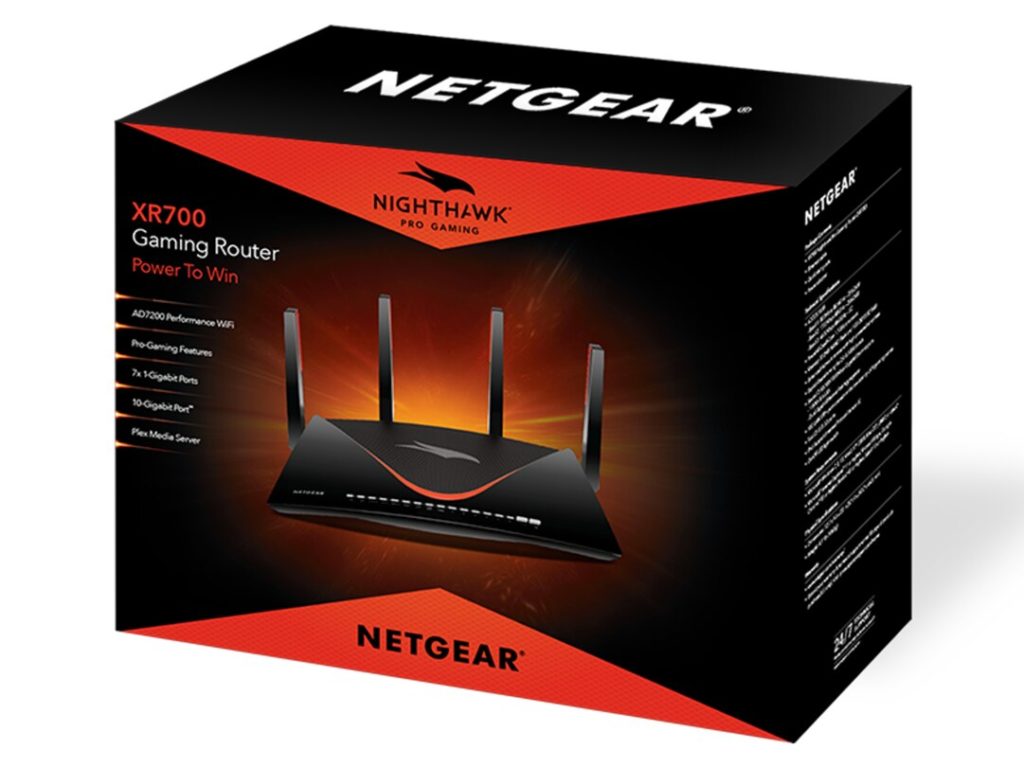
Gamers can rejoice thanks to the Geo-Filter. It can reduce lag by limiting the game servers you’re connecting to. After setting your location on a map and setting a distance range, the XR700 will automatically prevent players and servers that are too far from your location from slowing down your gaming action. The Geo-Filter is highly customisable and can be tweaked on a per game basis.
As cool as these gamer specific features are, the lack of anti-malware and parental controls was noticeable.
If like me your network is groaning under the weight of connected devices, chances are that you’ll also like the XR700’s Device Manager. It displays a network map showing all connected devices. Each device is clickable and doing so will show its IP and MAC address and give you the ability to block/enable network access.
I also liked having access to a chart displaying upload and download bandwidth utilisation for all devices on my network, which when coupled with the System Information tab showed what network resources were consumed.
Set Up
Getting set up wasn’t all that difficult either. After hooking the XR700 to my fibre connection during this Netgear NightHawk review, I powered it up and typed www.routerlogin.net in my browser, which launched the Setup Wizard. I selected my LAN port type (1Gb or 10Gb) and waited for the setup wizard to detect my connection type and internet speed.
From there I set up an Administrator account and created names for the 2.4GHz and 5GHz bands. Router install time was just 25 minutes (excluding reconfiguring the various smart widgets scattered throughout my house).
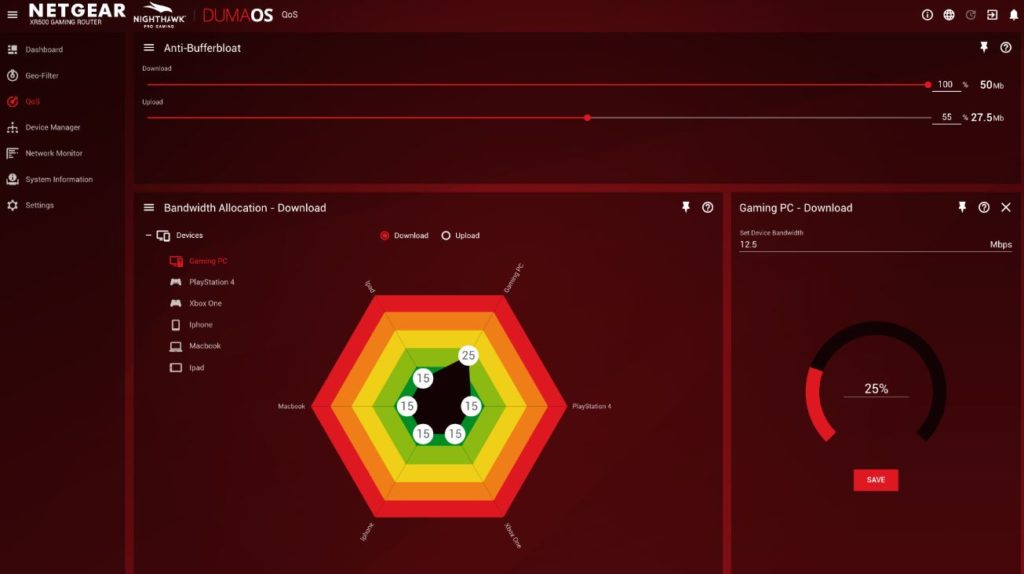
In the same room, the XR700 proved to be a zippy performer. I clocked it at just over 100Mbps on 2.4GHz. At the other end of the house, I managed a still impressive 75Mbps. Using a 5GHz connection, the XR700’s delivered the goods at a blistering 539Mbps. From the other side of the house, it managed a healthy 308Mbps.
Netgear NightHawk Review – Summary
If you’re a gamer wanting to up your game, the XR700 might be the answer for what ails you. By virtue of its gamer-friendly features and zippy performance, it is likely to be a must have item for many gamers. More raw grunt than a piggery and impressive performance and usability combine to give the XR700 a top score.









